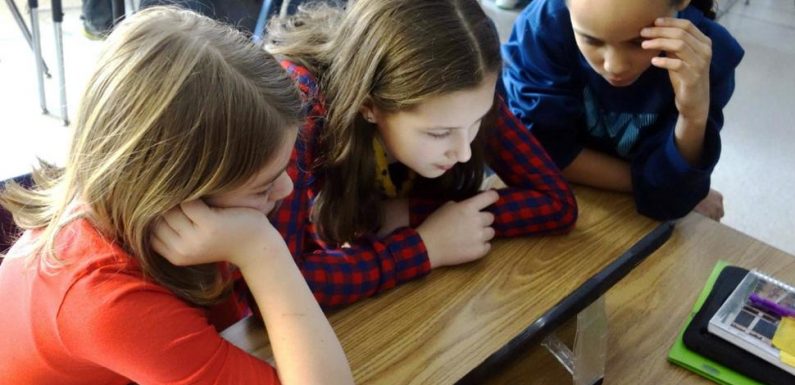

Amid sustained growth in an education technology sector competing to put innovative digital tools in front of students, some educators are lamenting a disconnect between the products entrepreneurs are offering and what schools actually need – a rare criticism of an industry often lauded as vital to maximizing student learning potential.
“I think there’s a tendency to see ed tech as the savior of American education, and I do not believe it is,” Eva Moskowitz, founder of New York-based Success Academy Charter Schools, said this week at a conference addressing the role of technology in the classroom. “I do not believe you can get to equality through ed tech
Suggesting that such a position “may be heresy,” Moskowitz told the room of about 200 entrepreneurs and investors that technology will never be able to replace a teacher’s ability to inspire students and instill passion for education.
“In that sense, ed tech is not the answer,” she said. “But I think ed tech can be enormously helpful if used in a surgical, strategic way.”
Her message was one of the prevailing themes at the NYEdTech Week, a three-day summit at New York University’s Steinhardt School of Culture, Education and Human Development, where technology inventors, investors, entrepreneurs, educators and policymakers come together to discuss the future of the the market and where the sector is headed.
Education technology is pitched as a cure-all for the many problems plaguing K-12 education, though rarely do new technologies move the needle in any significant way – and they often come at a steep price.
But the sector plays a crucial role in driving the much-needed modernization of the U.S. education system, which is widely acknowledged as not keeping pace with tech-driven advancements in other areas of society and the marketplace.
One of the key areas of focus of education technology has been its response to a push among school districts to adopt what’s known in the education space as “personalized learning” – creating learning environments tailored to each student’s specific needs.
Indeed, just last week Facebook founder Mark Zuckerberg posted a letter to his Facebook page, entitled “Lessons in Philanthropy 2017,” in which he details some lessons he and his wife, Priscilla Chan, learned during the first two years running the Chan Zuckerberg Initiative and reaffirms their commitment to education technology as a way to advance personalized learning.
“Over the long term, we need to build tools to empower every teacher at every school to provide personalized instruction and mentorship to every student,” he wrote. “We need an education system where all students receive the equivalent of an expert one-on-one tutor.
He continued: “Rather than having every student sit in a classroom and listen to a teacher explain the same material at the same pace in the same way regardless of a student’s strengths, learning style and interests, research shows students will perform better if they can learn at their own pace, based on their own interests, and in a style that fits them.”
The Chan Zuckerberg Initiative dove head first into this territory upon launch in 2015 and has already invested heavily in the development of personalized learning software, including a team of personalized learning engineers.
“There are 25,000 middle and high schools in the U.S., and our goal is help many of them use these tools over the next decade,” Zuckerberg wrote.
Along the same lines, part of the Bill & Melinda Gates Foundation’s new strategy for investing nearly $1.7 billion in education over the next five years includes advancing research and development in education technology in order to improve students learning, especially for students of color.
But the money pouring into the education technology space – not just from philanthropies but also from venture capitalists and other investors – doesn’t always result in the development of useful products.
“Don’t build what you think we need,” Susan Enfield, superintendent of Highline Public Schools in Burien, Washington, just south of Seattle, said during a panel at the NYEdTech week on Monday. “Have conversation with us about what we need. So many things don’t meet a need we have. Don’t assume you know what our needs are.”
Stephen Murley, superintendent of Iowa City Community School District in Iowa, underscored the importance of having someone on any education technology development team who knows the inner workings of K-12 systems.
Moskowitz echoed those sentiments during her speech.
“Think differently about what constitutes innovation in education,” she said. “Understanding how schools are really working and what their needs are for effective and efficient ways of doing things is most helpful. I don’t think enough attention has been paid to what schools are actually trying to accomplish and their values and their priorities.”
One of the ways technology can play an important role in the education space, she continued, is by helping to streamline administrative and back-office work – tools that can, for example, digitize student records or ensure a district is meeting its special education compliance standards.
“I have found the education space just way behind every other sector in terms of how do we do things fast, better, more efficient,” she said – a mantra she’s often repeatedthroughout the years. “There is enormous inefficiency there, and we certainly could use a lot of products to improve the home-office situation.”
Enfield also stressed that superintendents are often put in a difficult position of wanting to adopt a technology platform to help fix a certain issue but also being nervous about picking the wrong product or enlisting the help of a company that doesn’t provide sufficient support on how to effectively use the product.
“We’re entrusted with people’s children, and it’s hard for me to take a risk, fail and then have to look in the eyes of a father and say, ‘Oh I’m sorry that plan didn’t work for your daughter. It looked cool at the time,’” Enfield said. “But the status quo is not good. We cannot remain what we are today.”
courtesy= usnews.com

